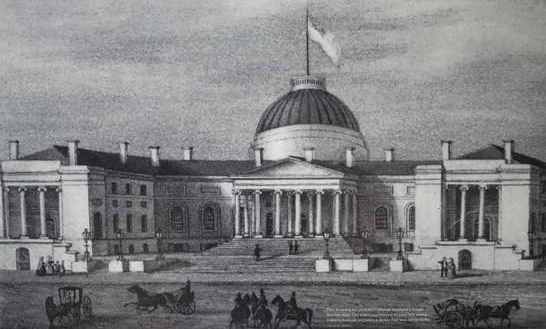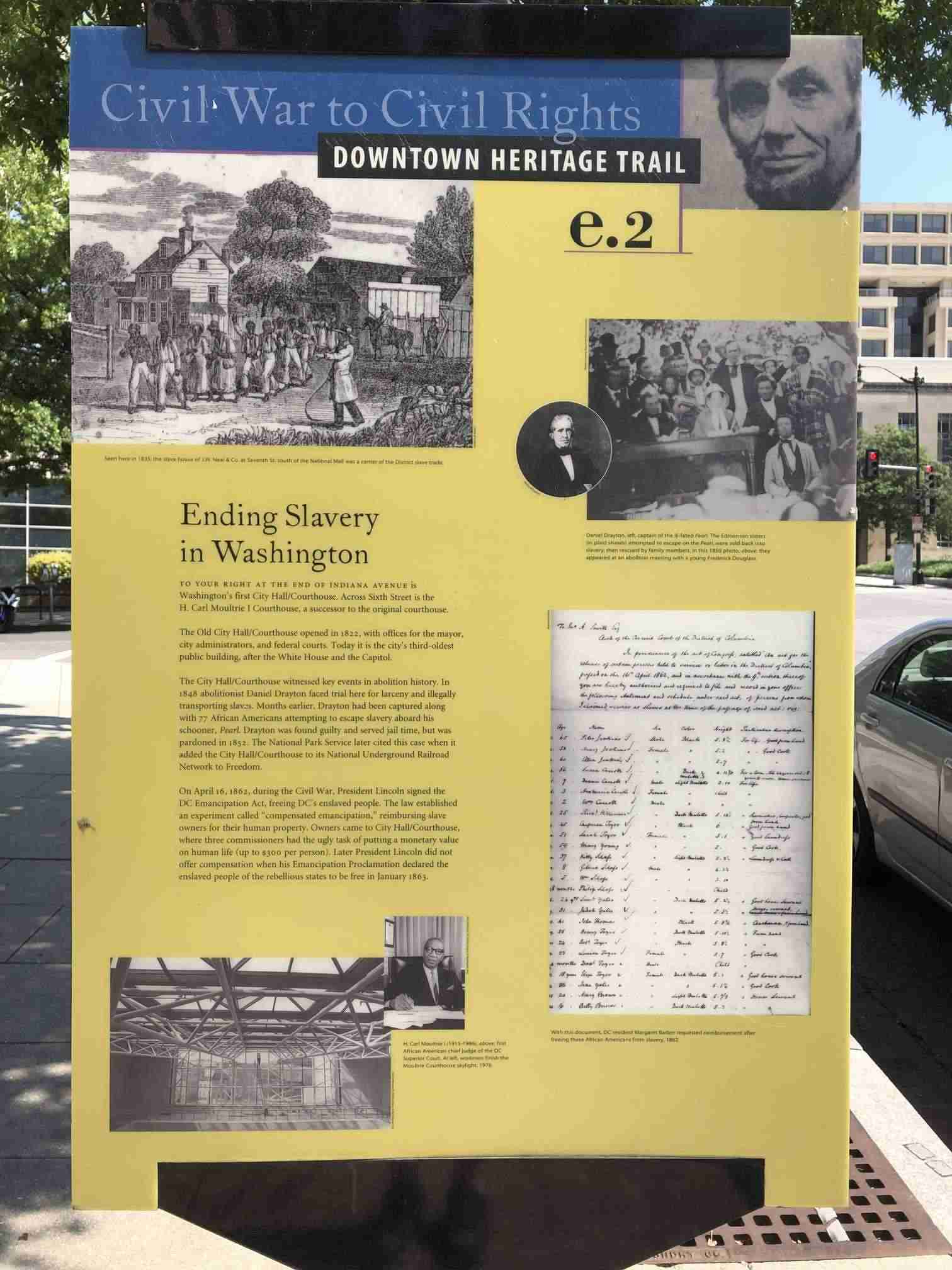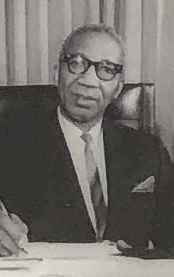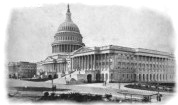Ending Slavery in Washington


The Civil War (1861-1865) transformed Washington, DC from a muddy backwater to a center of national power. Ever since, the city has been at the heart of the continuing struggle to realize fully the ideals for which the war was fought. This drawing (above) for architect George Hadfield's Greek revival style City Hall/Courthouse (To your right at the end of Indiana Avenue), includes a dome that was never built. Across Sixth Street is the H. Carl Moultrie I Courthouse, a successor to the original courthouse.
The Old City Hall/Courthouse opened in 1822, with offices for the mayor, city administrators, and federal courts. Today it is the city's third-oldest public building, after the White House and the Capitol.
The City Hall/Courthouse witnessed key events in abolition history. In 1848 abolitionist Daniel Drayton faced trial here for larceny and illegally transporting slaves. Months earlier, Drayton had been captured along with 77 African Americans attempting to escape slavery aboard his schooner, Pearl. Drayton was found guilty and served jail time, but was pardoned in 1852. The National Park Service later cited this case when it added the City Hall/Courthouse to its National Underground Railroad Network to Freedom.
On April 16, 1862, during the Civil War, President Lincoln signed the DC Emancipation Act, freeing DC's enslaved people. The law established an experiment called "compensated emancipation," reimbursing slave owners for their human property. Owners came to the City Hall/Courthouse, where three commissioners had the ugly task of putting a monetary value on human life (up to $300 per person). Later President Lincoln did not offer compensation when his Emancipation Proclamation declared the enslaved people of the rebellious states to be free in January 1863.

H. Carl Moultrie I (1915-1986)
the first African American chief judge
of the DC Superior Court

